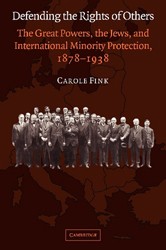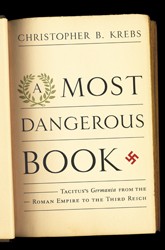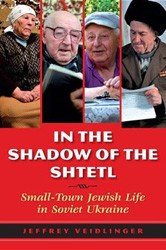In this first of two volumes, Simon Schama softens his immense erudition in a voice that is often conversational and personal, leavened at times by an ironic off-handedness. For instance, in a discussion of how Hellenistic culture and its material goods influenced Jewish lifestyles, he writes, “This was chapter one in the long history of Jewish shopping.”
Story of the Jews is composed of discrete historical episodes in Jewish history (it is not a continuous narrative) that often rely on stories of individuals that Schama has gleaned from the scholarly literature. He shares arcane details, biographical sketches, and excursions into scholarly investigations. He traces, for example, the history of the extraordinary water tunnel, briefly referred to in 2 Kings 20 and 2 Chronicles 2, that King Hezekiah had ordered dug through limestone to divert water from the spring of Gihon at Siloam to a reservoir in Jerusalem. Shama devotes thirty pages to describing the sixteen-year-old boy who discovered the tunnel in 1880, his parents, his teacher, details about the arduous difficulties in deciphering the inscription found on the tunnel, and much more.
In carrying the story through to 1492 and the vileness of the Spanish Inquisition, Schama first discusses at length the split between Judaism and Christianity, the enmity that had its origins in Paul moving “the heart of Christian theology from Christ’s life to his death [that] made the implication of the Jews in his killing not just unavoidable but central to the new teaching” and the well-known account of Constantine in the early fourth century CE cementing the enmity that continues today. “Let us have … nothing in common with the Jews who are our enemies,” Constantine wrote in a letter to John Chrysostom. “Let us studiously avoid all contact with their evil ways … for how can they entertain right views on any point having compassed the death of the Lord.”
In the last third of Volume I, Schama examines the rise and fall of Sephardic Jewry through well-known brilliant figures of the so-called Hebrew Golden Age — among them, Shmuel ibn Negrahala (Samuel Hanagid), Solomon Ibn Gabirol, Yehudah Halevi, Nahmanides, Maimonides — and the invasions of Spain by the barbaric and brutal North African Berbers, followed soon after by Catholic persecutions and autos-da-fé. In Schama’s telling, the stories and their details are still heartbreaking. “No historian, certainly not this one,” he writes, “can recover the horror, dismay, fear and pathetic agony of the Jews who heard the implacable death sentence now imposed on communities which had seemed their ‘Jerusalems in Spain.’”
The Story of the Jews breaks no new ground as far as Jewish history goes, but drawing on biblical and archaeological scholarship of the last half century, Schama gives us his singular perspective on how Jewish interpretation and writing have been the means through which Jewish identity — perhaps identities — have come into being. The great Jewish texts are not closed affairs, he implies, but continue to require our continuing interpretation.
Related content:




